Extension Foundation Online Campus
Search results: 25
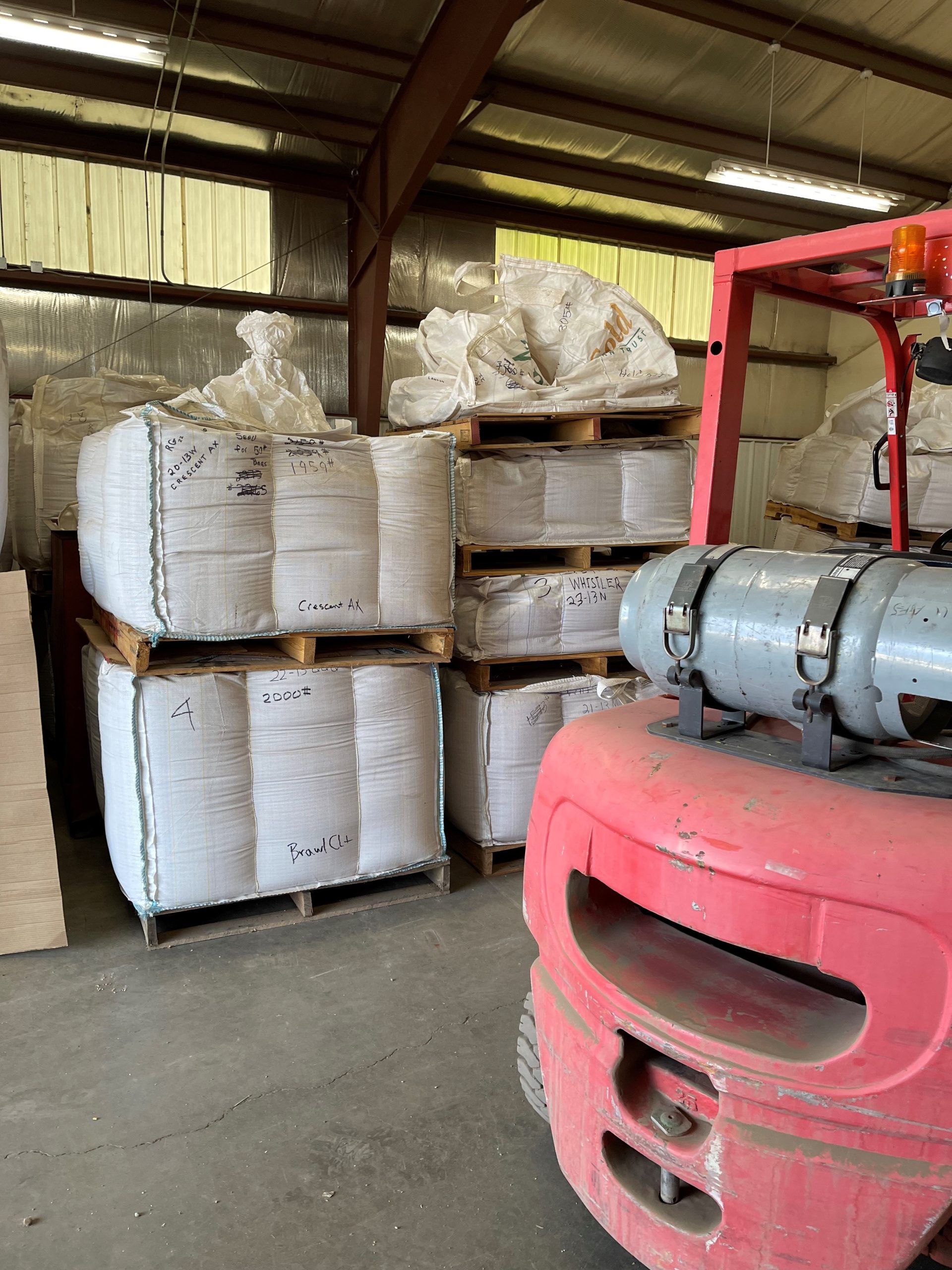
Summary: Seed lots are not always used entirely each planting season. Seed that was purchased or grown this year may require storage to be carried over to subsequent planting seasons. When seed is carried over, it is expected to be of the same quality as seed that was recently produced. As a result, understanding the best possible methods for carrying over seed to maintain high germination and viability is crucial.
This course is sixth in a series which will walk you through foundational concepts of seed conditioning.Upskill Credentials: If you finish the entire course including passing the quiz with a score of 80% or better (which you can take up to 3 times) and filling out the short 5 mins feedback survey, then you will earn a badge certificate of completion. This course has been approved for 2 Crop Management CEUs through the national Certified Crop Adviser program.
Acknowledgements: This online micro-credential upskilling course is offered through the CSU Ag Upskilling program. This material is based upon work that is supported by the National Institute of Food and Agriculture, U.S. Department of Agriculture, under award number 2024-68018-42796, administered by Colorado State University. USDA is an equal opportunity employer and service provider. Any opinions, findings, conclusions, or recommendations expressed in this publication are those of the author(s) and do not necessarily reflect the view of the U.S. Department of Agriculture.

The enrollment fee for this course is $50.
You may also choose to purchase all 7 of the CSU Upskilling Seed Conditioning Courses for a discounted price of $300. To do so, click the link below.
- Teacher: Tamla Blunt
- Teacher: Deana Namuth-Covert
- Teacher: Rick Novak
- Teacher: Laura Pottorff
This self-directed course, composed of 8 modules, is designed for frontline 4-H Youth Development Staff interested in learning how multiple forms of data (4-H Common Measures data and Lesson Study data) can be used to help make decisions in regards to program improvement and professional development opportunities.
Through the learning modules, you gain the knowledge to effectively leverage Common Measure 2.0 to get the youth-generated data you need to assess a program and make it even better. You’ll have the data to better understand how and what youth are learning in each of the major 4-H areas of emphasis. And you’ll learn how to use these tools and the data to make meaningful decisions about your local programs. You’ll also learn how Lesson Study can help take the guesswork out of professional development and program improvement. It’s all about becoming an even more effective leader, educator and mentor for young people. And that leads to even greater confidence, satisfaction and passion as you work with youth.
Through a deeper dive into 4-H Common Measures and Lesson Study, participants will have an increased understanding of basic program evaluation practices, will learn how to successfully access and implement 4-H Common Measures and Lesson Study, and ultimately will understand how when paired together result in making data-driven decisions.
For more information or to enroll please contact: Jessica Mullendore at jmullendore@unl.edu
- Instructors: Makayla Burg
- Instructors: Jill Lingard
- Instructors: Seth Teager
Course Name: AB001-Record Keeping and Cash Flows
This class starts with the basics of building a financial plan, which is keeping track of your income and expenses. This is where we first introduce the financial self-assessment. Students will fill out the assessment to help them gain a better understanding of their own financial well-being, and hopefully give them motivation to go through the entire money management modules. The assessment is retaken in module 7, which allows students to see their progression. 1. Record Keeping 2. Hand versus. Computer Records 3. 5 Basic Steps to Record Keeping 4. Cash Flow Statements 5. Types of Expenses By the end of this class students should have a clear method for how they want to track their expenses and build a cash flow budget. Questions? Email Trent Teegerstrom at tteegers@ag.arizona.edu.
The course contains video so it requires a computer that can play audio and video.
Contact and technical support: Robert Masson, masson@arizona.edu.
- Teacher: Jody Dean
- Teacher: Don Dinwiddie
- Teacher: Robert Masson
Course Name: AB002-Loans and Credit Cards
At this point, this class does not revisit record keeping, but students should remember to keep track of their cash flows, because they will be referring to them in later modules. AB002 addresses interest rates on loans and credit cards. We also introduce the MyFi Assist app, it is a free financial assistant app. MyFi is used extensively through the money management modules. 1. Components of an Interest Rate 2. Credit Score versus Interest Rate 3. MyFi Assist 4. Paying Credit Cards 5. Paying for House Loans 6. Take-Home Message 7. Money Management Module Review 8. Reminder to Keep Track of your Budgeting Exercise The objective of module 2 is to understand the effects of interest rates, as well as managing loans and credit card usage. Questions? Contact Trent Teegerstrom at tteegers@ag.arizona.edu
The course contains video so it requires a computer that can play audio and video.
Contact and technical support: Robert Masson, masson@arizona.edu.
- Teacher: Jody Dean
- Teacher: Don Dinwiddie
- Teacher: Robert Masson
Course Name: AB003-Applying for a Loan-the 5 C's of Borrowing
This class does not revisit the record keeping assignment, but students should remember to keep track of their cash flows. Also try to answer any questions that may come up while they are trying to compile their budget. Cash flows and budgets will be referred to in later modules. This class addresses the factors that lenders take into account when approving loan applications. Understanding what a lender is looking for in a borrower can help potential borrowers increase their chances of being approved for a loan, or obtaining a better interest rate. 1. Qualities Banks and Lenders Look for in a Borrower 2. Sources of Money 3. Terms and Conditions of a Loan 4. Personal Information Required for Loan Application 5. 5 C’s of Borrowing 6. Basis of Loan Approval Students should keep track of their cash flows and budgets; if they have an accurate budget they may find that applying for a loan is not necessary. Instead, they can cut frivolous expenses and save to buy the things they want. If applying for a loan is necessary, they already have an idea of where they stand in the eyes of a lender. Questions? Email Trent Teegerstrom at tteegers@ag.arizona.edu.- Teacher: Jody Dean
- Teacher: Don Dinwiddie
- Teacher: Robert Masson
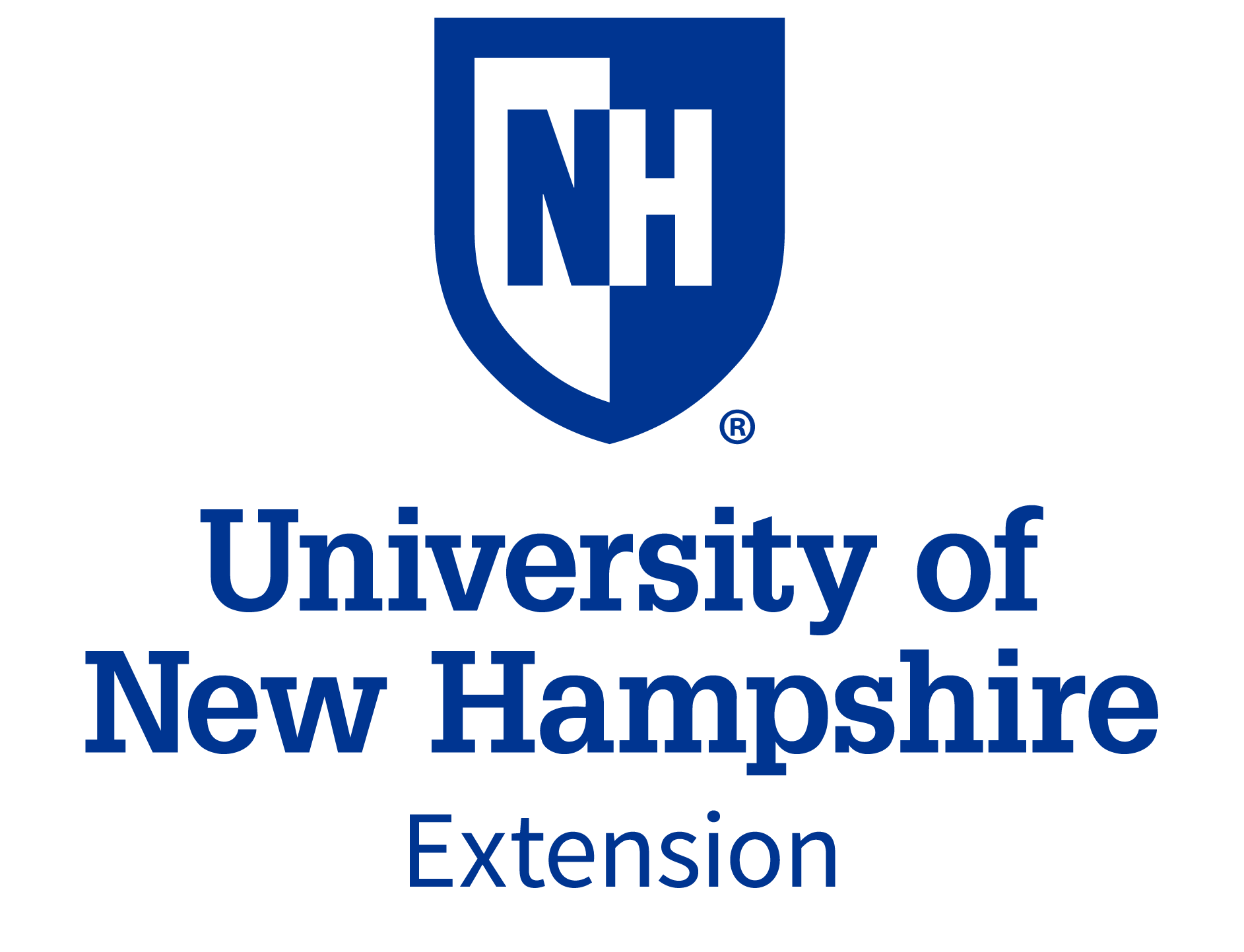
By taking this course, students will learn:
The Worker Protection Standard (WPS) is a regulation developed by the United States Environmental Protection Agency (EPA) to protect workers and handlers from the harmful effects of pesticides and their residues. The standard went through some major
revisions in 2015 and this course will reflect those changes.
This course will cover some of the major points of the Worker Protection Standard and what employers need to cover with their employees in order to comply.
Once you've completed this course, you should be able to:
- Define a worker and a handler
- Understand the importance of the WPS
- Know when compliance is necessary
- Identify the basic requirements needed by both a worker and handler to reduce their pesticide exposure
Watch the presentation from beginning to end. There are review questions interspersed to help you review the information. When you feel you are comfortable with the information, take the final assessment below Jeopardy game.
For more information please contact Rachel Maccini, Pesticide Safety Education Program Coordinator, University of New Hampshire, Cooperative Extension.
The fee for the course is $40. To purchase and enroll in the course, click the following button:
- Teacher: Faye Cragin
- Teacher: Rachel Maccini
The Vermont Backyard Woods Course is designed for homeowners with less than 25 acres who want to learn more about the woods in their backyard: what’s in it, who (wildlife) uses it, and how they can become better caretakers of it.
The course explores the following themes: An Introduction to Your Backyard and Beyond; Getting to Know Your Woods; Backyard Woods Projects; Developing a Backyard Woods Action Plan.
About the Course
- This is an introductory course, designed to give landowners basic skills and connect them to resources available.
- The self-paced course is hosted online and is composed of 4 sections. Each section has videos and activities that are to be completed on your own schedule.
- Participants will be invited to join drop-in webinar sessions with experts.
- There will be two optional in-person walks.
Who should join this course?
- Homeowners who own 5-25 acres.
- Homeowners who want to become more active stewards of their land, but don't know where to start.
- Homeowners who want to learn general ecology in Vermont.
By the end of the program participants will:
- Understand why their backyard woods matter, the benefits it provides, and how it contributes to Vermont’s forest landscape.
- Identify natural history and cultural features in their backyard woods.
- Identify and rank stewardship goals and objectives for their property.
- Develop a stewardship action plan with a project schedule and plan for implementing stewardship activities.
- Increase awareness and connection to resources and organizations available to assist landowners in post-course activities.
Questions?
Contact Gwen Kozlowski at gwen.kozlowski@uvm.edu or 802-651-8343
- Teacher: Gwen Kozlowski
Students who take this course will learn safe use of pesticides, including Integrated Pest Management; Federal and Colorado Laws Governing the Use of Pesticides; Understanding Pesticide Labels and Safety Data Sheets; Applicator Safety; Pesticide Application; and Environmental Protection and Public Health.
For information or to enroll contact Lisa Blecker, Colorado State University, at Lisa.Blecker@colostate.edu
- Teacher: Lisa Blecker
- Teacher: Hannah Geisterfer
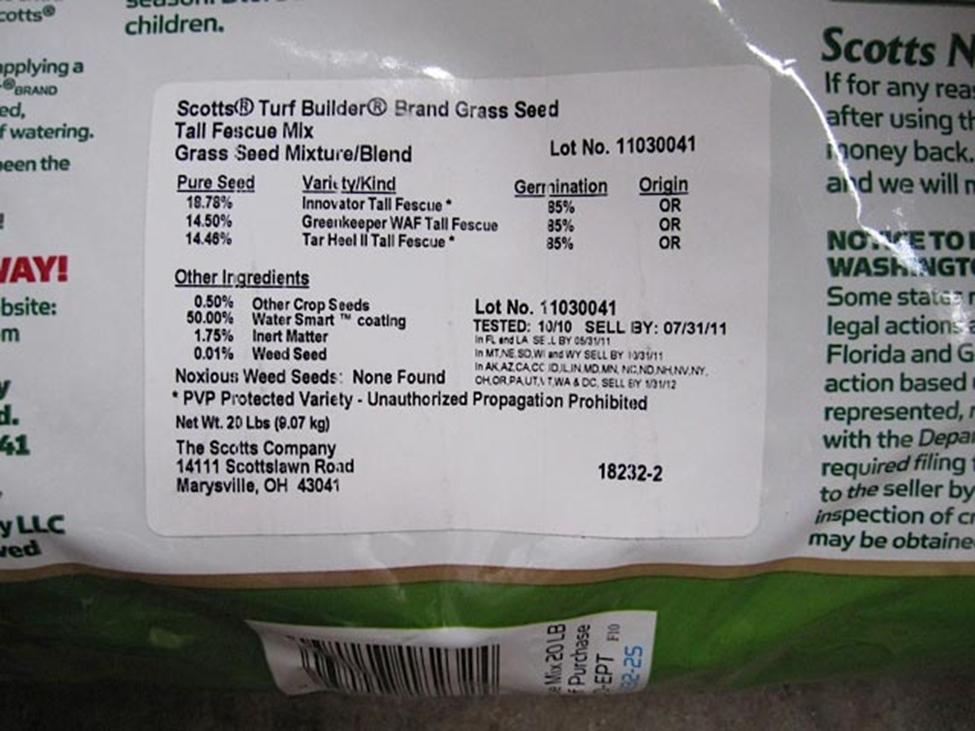
Summary: The Seed industry exists to provide high quality seed to farmers and growers. The value of seed is a measure of its ability to establish the desired field stand at low planting rates, grow into plants which are high-yielding, healthy, and the established type. The livelihood of farmers and the ultimate health of communities relies on the ability of seed to perform and grow into a crop that can be harvested and eaten. A system of laws and regulations has developed over time to protect societies and food systems from liability and risk. A seed conditioner must understand the system of laws and regulations in place, ensure that the conditioning plant and its operation are maintaining seed varietal identity through the entire process and avoid introduction of contaminants. This course is fifth in a series which will walk you through foundational concepts of seed conditioning.
Upskill Credentials: If you finish the entire course including passing the quiz with a score of 80% or better (which you can take up to 3 times) and filling out the short 5 mins feedback survey, then you will earn a badge certificate of completion. This course has been approved for 2 Crop Management CEUs through the national Certified Crop Adviser program.
Acknowledgements: This online micro-credential upskilling course is offered through the CSU Ag Upskilling program. This material is based upon work that is supported by the National Institute of Food and Agriculture, U.S. Department of Agriculture, under award number 2024-68018-42796, administered by Colorado State University. USDA is an equal opportunity employer and service provider. Any opinions, findings, conclusions, or recommendations expressed in this publication are those of the author(s) and do not necessarily reflect the view of the U.S. Department of Agriculture.

The enrollment fee for this course is $50.
You may also choose to purchase all 7 of the CSU Upskilling Seed Conditioning Courses for a discounted price of $300. To do so, click the link below.
- Teacher: Tamla Blunt
- Teacher: Deana Namuth-Covert
- Teacher: Rick Novak
- Teacher: Laura Pottorff
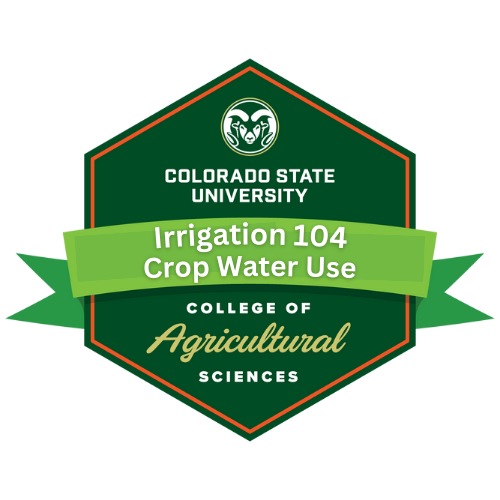
Summary: When making decisions about when to irrigate a crop, no matter the specific plant or scenario, it is important to take into consideration evapotranspiration rates which provide an estimate of water flux out of your system. The challenge is that evapotranspiration varies a lot depending on the specific plant, its growth stage plus changing weather (or greenhouse) conditions. Precision agriculture scientists have been able to characterize two reference crop values as a way to standardize evapotranspiration calculations based on weather data. In this lesson you will learn what is meant by a reference crop, crop coefficient, and water stress coefficient and how you can use these to inform your irrigation management decisions.
Time Required: We estimate it will take you 2 hours to complete the lesson. You can work on it at your own pace and do not have to complete it in one setting.
Who Would Benefit: A variety of people will find this upskilling course useful from adults to high school students. This includes careers (or hobbyists) growing plants (ie field crops, greenhouse production, turf and lawns, gardens, etc.) and wishing to save money and water by better timing irrigation applications.
Upskill Credentials: If you finish the entire course including passing a final quiz (which you can take up to 3 times), then you will earn a badge certificate of completion. It has been approved for 2 Soil and Water Management CEUs through the national Certified Crop Adviser program.
Instructor: Dr. Allan A. Andales is a Professor and Extension Specialist of Irrigation and Water Science in the Department of Soil and Crop Sciences, Colorado State University (CSU). He has a joint appointment in the Department of Civil and Environmental Engineering. Dr. Andales applies principles of soil and water engineering, environmental biophysics, and numerical methods to study the effects of management practices and environmental factors on field hydrology and agricultural production. Experimental data are used to develop computer models and decision support tools that can improve agricultural water use efficiency and water quality. He is a member of the CSU Extension Water Resource Management Team that engages the public in addressing agricultural and urban water issues in Colorado.
ADA Accessibility: We have done our best to follow ADA best practices. Let us know if you run into any problems or require further accommodations.
Acknowledgements: This online micro-credential upskilling course is offered through the CSU Ag Upskilling program. Development was supported in part by funding from the CHS Foundation, administered by Colorado State University (2022). The CHS Foundation, funded by charitable gifts from CHS Inc., is focused on developing a new generation of agriculture leaders for life-long success. Together, with our partners, we are igniting innovation and driving excellence in agriculture education, cultivating high impact programs for rural youth and accelerating potential for careers in agriculture. Learn more at CHS Foundation.


- Teacher: Allan Andales
- Teacher: Deana Namuth-Covert

Course fee: $10.99 2-hours
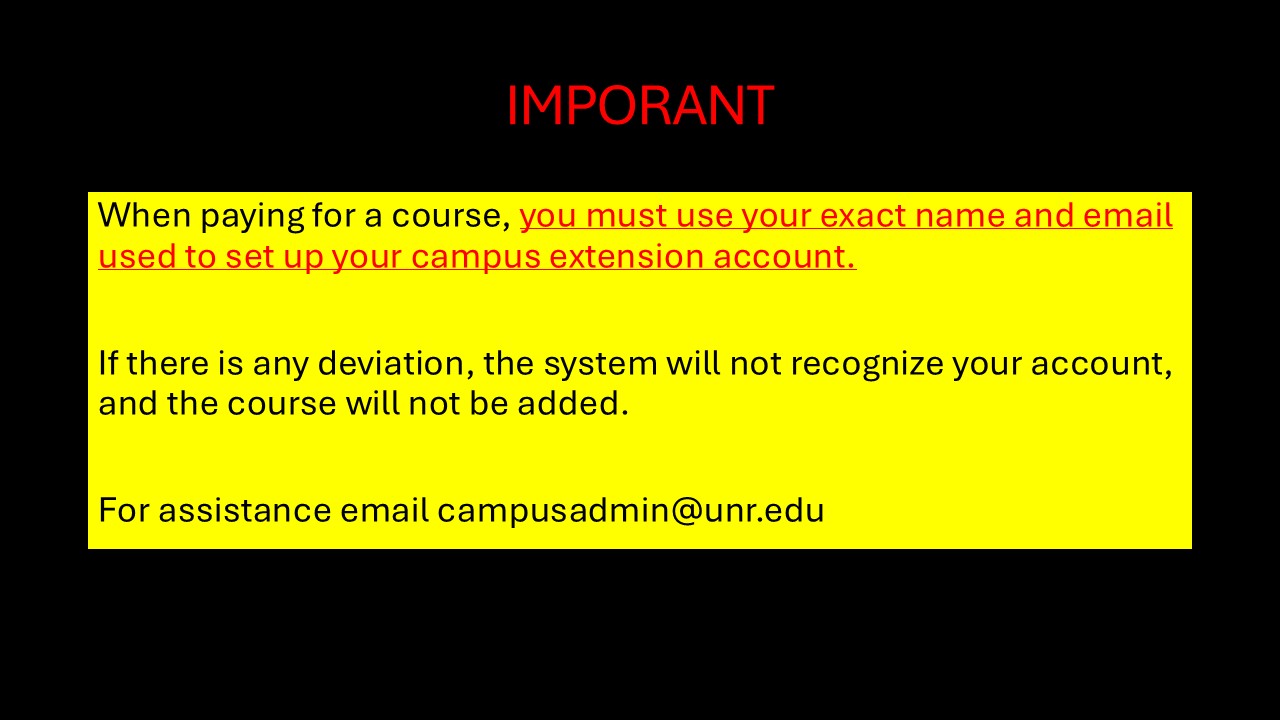
For Technical support email: campushelp@extension.org
Instructor email: childcare@unr.edu
** This course is updated annually on January 1st. If you take the course multiple times, the certificate will show the original completion date and cannot be altered.
** The course will be inaccessible during the final two weeks of the year for maintenance. Any unfinished coursework will need to be completed in next year's course.
This training is not designed to run on smart phones, tablets or other small mobile devices.
- Teacher: Cynthia James
- Teacher: Stephanie May
- Teacher: Danielle Pertile
- Teacher: Cathryn Peshlakai
- Teacher: Lisa Whipple
- Teacher: Sarah Wright
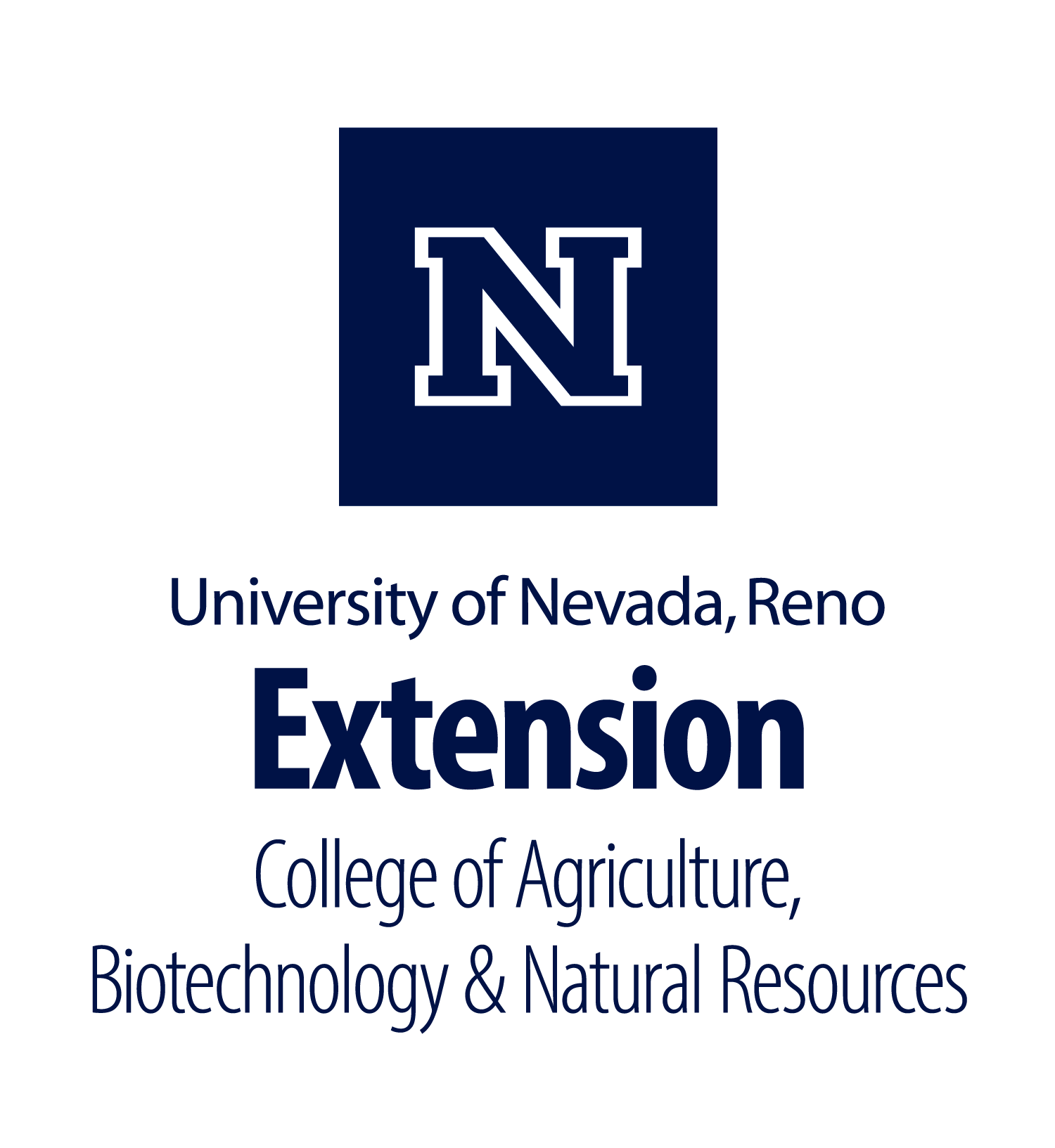

Early Childhood Workforce Training 2025
Child Development: Positive Guidance
This module will present the goals of positive guidance, misunderstandings about guidance, key practices, effective environments, common behavior challenges and offer positive guidance strategies for the classroom
Course fee: $5.99 1-hour

Instructor email: childcare@unr.edu
** This course is updated annually on January 1st. If you take the course multiple times, the certificate will show the original completion date and cannot be altered.
** The course will be inaccessible during the final two weeks of the year for maintenance. Any unfinished coursework will need to be completed in next year's course.
- Teacher: Stephanie May
- Teacher: Danielle Pertile
- Teacher: Cathryn Peshlakai
- Teacher: Lisa Whipple
- Teacher: Sarah Wright

This course consists of four lessons for the general horse owning public. They are Understanding Feeding Horses, Safe Trailering, Management of Common Parasites, and Facility Assessment and Biosecurity. This course can either be taken as a standalone, asynchronous course, or as part of the Indiana Equine Management Signature Program. If you are interested in signing up for the live sites in Indiana, contact Colleen Brady bradyc@purdue.edu for the separate registration link and the voucher for free registration in this course.
- Teacher: Colleen Brady
- Teacher: Katherine Frels
- Teacher: Luqi Li
- Teacher: UNL AGROHORT Online
The Introduction to Southeastern Prescribed Fire course is designed to introduce students to the fundamental basics of prescribed burning in Southeastern forested ecosystems. At the end of the course the student should have a working knowledge of fire law, fire terminology, fire prescriptions, fire safety, firebreaks, smoke management and a basic understanding of how to conduct a prescribed burn. This course is not intended to take the place of state Certification courses, workshops, or experience in the field. Rather, it is intended to give students a basic understanding of the principles of prescribed fire and fire effects.
- Teacher: Jennifer Fawcett
- Teacher: Dwayne Hunter
- Teacher: John Weir
- Content Specialists: Elliot Nauert
This online course is the National Worker Protection Standard: Web-Based Training for Trainers of Agricultural Workers and Pesticide Handlers. The course was developed by the Pesticide Educational Resources Collaborative (PERC) through a cooperative agreement (agreement #X8-83616301) between the U.S. Environmental Protection Agency’s (EPA) Office of Pesticide Programs and the University of California Davis Continuing and Professional Education, in collaboration with Oregon State University. Approval number EPA WPS TTT W/H 00030.
This course provides the information required to train those who will train agricultural workers and pesticide handlers under the U.S. EPA Worker Protection Standard (WPS). It will guide you through the necessary procedures to provide agricultural workers and pesticide handlers with required information on how to avoid exposure to pesticides and pesticide residue.
Completion of this course certifies you as a qualified WPS trainer of agricultural workers and pesticide handlers in the continental U.S., Alaska, Hawaii, Puerto Rico, Guam, and the U.S. Virgin Islands. Some states require state-specific training and this course alone would not qualify. Before enrolling, you must check with your state or tribal pesticide regulatory agency to verify possible additional requirements. Note: this course will not satisfy the train the trainer requirements in California for the California Department of Pesticide Regulation. You must contact them directly to get a list of courses that will.
Each year, a new offering of the current course will be posted. This will allow students to retake the course as needed by employers and regulatory agencies. Previous year’s offering will be available on the student’s profile should they need to access to an older certificate. Note that the content will be identical each year, unless otherwise noted that there was a course revision.
System Requirements
Computer: Strongly recommended: Mac OSX 10.9 or higher or a PC running Windows 7 or higher.
Browser: Strongly recommended: Google Chrome or Mozilla Firefox. Strongly discouraged: Browsers other than those listed above. Others may work but have experienced performance issues in testing (e.g., Internet Explorer, Microsoft Edge, etc.) eXtension is not able to respond to troubleshooting inquiries if customers are using a non-recommended browser.
Audio: This course contains audio narration. To hear the narration, your computer will either need audio speakers built-in or attached. You can also listen to the audio via headphones.
For questions about the course content, contact PERCsupport@ucdavis.edu.
For questions about technical support (e.g., enrolling, payments, etc.) contact cataloghelp@extension.org.
To enroll, see below.Course Completion Checklist
- Complete the modules in order (12)
- Complete the Knowledge Checks for each module (12)
- Take the Final Exam (must
score 70% to pass)
- Complete the evaluation
- Download certificate
- Submit your certificate. You
are responsible for identifying and submitting your certificate to appropriate
entities.
The enrollment fee for this course is $45. To purchase and enroll in this course, click here:
No Refund Policy – Unless the course is not accessible using one the required operating system(s) or browser(s), then PERC will not issue a refund. If you have any questions about our No Refund Policy, please contact us at percsupport@ucdavis.edu.
- Teacher: Suzanne Forsyth
- Teacher: Christian Gella
- Teacher: Hannah Moore
This course is no longer accepting enrollments.
This online course is the National Worker Protection Standard: Web-Based Training for Trainers of Agricultural Workers and Pesticide Handlers. The course was developed by the Pesticide Educational Resources Collaborative (PERC) through a cooperative agreement (agreement #X8-83616301) between the U.S. Environmental Protection Agency’s (EPA) Office of Pesticide Programs and the University of California Davis Continuing and Professional Education, in collaboration with Oregon State University. Approval number EPA WPS TTT W/H 00030.
This course provides the information required to train those who will train agricultural workers and pesticide handlers under the U.S. EPA Worker Protection Standard (WPS). It will guide you through the necessary procedures to provide agricultural workers and pesticide handlers with required information on how to avoid exposure to pesticides and pesticide residue.
Completion of this course certifies you as a qualified WPS trainer of agricultural workers and pesticide handlers in the continental U.S., Alaska, Hawaii, Puerto Rico, Guam, and the U.S. Virgin Islands. Some states require state-specific training and this course alone would not qualify. Before enrolling, you must check with your state or tribal pesticide regulatory agency to verify possible additional requirements. Note: this course will not satisfy the train the trainer requirements in California for the California Department of Pesticide Regulation. You must contact them directly to get a list of courses that will.
Each year, a new offering of the current course will be posted. This will allow students to retake the course as needed by employers and regulatory agencies. Previous year’s offering will be available on the student’s profile should they need to access to an older certificate. Note that the content will be identical each year, unless otherwise noted that there was a course revision.
System Requirements
Computer: Strongly recommended: Mac OSX 10.9 or higher or a PC running Windows 7 or higher.
Browser: Strongly recommended: Google Chrome or Mozilla Firefox. Strongly discouraged: Browsers other than those listed above. Others may work but have experienced performance issues in testing (e.g., Internet Explorer, Microsoft Edge, etc.) eXtension is not able to respond to troubleshooting inquiries if customers are using a non-recommended browser.
Audio: This course contains audio narration. To hear the narration, your computer will either need audio speakers built-in or attached. You can also listen to the audio via headphones.
For questions about the course content, contact PERCsupport@ucdavis.edu.
For questions about technical support (e.g., enrolling, payments, etc.) contact cataloghelp@extension.org.
To enroll, see below.Course Completion Checklist
- Complete the modules in order (12)
- Complete the Knowledge Checks for each module (12)
- Take the Final Exam (must
score 70% to pass)
- Complete the evaluation
- Download certificate
- Submit your certificate. You
are responsible for identifying and submitting your certificate to appropriate
entities.
The enrollment fee for this course is $35. To purchase and enroll in this course, click here:
No Refund Policy – Unless the course is not accessible using one the required operating system(s) or browser(s), then PERC will not issue a refund. If you have any questions about our No Refund Policy, please contact us at percsupport@ucdavis.edu.
- Teacher: Suzanne Forsyth
- Teacher: Hannah Moore
This course is no longer accepting new registrations.
This online course is the National Worker Protection Standard: Web-Based Training for Trainers of Agricultural Workers and Pesticide Handlers. The course was developed by the Pesticide Educational Resources Collaborative (PERC) through a cooperative agreement (agreement #X8-83616301) between the U.S. Environmental Protection Agency’s (EPA) Office of Pesticide Programs and the University of California Davis Continuing and Professional Education, in collaboration with Oregon State University. Approval number EPA WPS TTT W/H 00030.
This course provides the information required to train those who will train agricultural workers and pesticide handlers under the U.S. EPA Worker Protection Standard (WPS). It will guide you through the necessary procedures to provide agricultural workers and pesticide handlers with required information on how to avoid exposure to pesticides and pesticide residue.
Completion of this course certifies you as a qualified WPS trainer of agricultural workers and pesticide handlers in the continental U.S., Alaska, Hawaii, Puerto Rico, Guam, and the U.S. Virgin Islands. Some states require state-specific training and this course alone would not qualify. Before enrolling, you must check with your state or tribal pesticide regulatory agency to verify possible additional requirements. Note: this course will not satisfy the train the trainer requirements in California for the California Department of Pesticide Regulation. You must contact them directly to get a list of courses that will.
Each year, a new offering of the current course will be posted. This will allow students to retake the course as needed by employers and regulatory agencies. Previous year’s offering will be available on the student’s profile should they need to access to an older certificate. Note that the content will be identical each year, unless otherwise noted that there was a course revision.
System Requirements
Computer: Strongly recommended: Mac OSX 10.9 or higher or a PC running Windows 7 or higher.
Browser: Strongly recommended: Google Chrome or Mozilla Firefox. Strongly discouraged: Browsers other than those listed above. Others may work but have experienced performance issues in testing (e.g., Internet Explorer, Microsoft Edge, etc.) eXtension is not able to respond to troubleshooting inquiries if customers are using a non-recommended browser.
Audio: This course contains audio narration. To hear the narration, your computer will either need audio speakers built-in or attached. You can also listen to the audio via headphones.
For questions about the course content, contact PERCsupport@ucdavis.edu.
For questions about technical support (e.g., enrolling, payments, etc.) contact cataloghelp@extension.org.
To enroll, see below.Course Completion Checklist
- Complete the modules in order (12)
- Complete the Knowledge Checks for each module (12)
- Take the Final Exam (must
score 70% to pass)
- Complete the evaluation
- Download certificate
- Submit your certificate. You
are responsible for identifying and submitting your certificate to appropriate
entities.
No Refund Policy – Unless the course is not accessible using one the required operating system(s) or browser(s), then PERC will not issue a refund. If you have any questions about our No Refund Policy, please contact us at percsupport@ucdavis.edu.
- Teacher: Suzanne Forsyth
- Teacher: Hannah Moore
The target audience is the college graduate level learner and agriculture professionals. Teachers include: Joe Keaschall, Leah Sandall, and Diane Nolan
For information or to enroll contact Kathy Schindler at kschindler1@unl.edu or 402-472-1730
- Teacher: Blaine Johnson
- Teacher: Diane Nolan
- Teacher: Leah Sandall
This Proper Respirator Use course will help you understand when and why a respirator is necessary, how to safely and correctly select, wear and maintain a respirator, respect a respirator's capabilities and limitations, recognize and respond appropriately in emergency situations, and comprehend the medical signs and symptoms that may limit or prevent effective respirator use.
This course is designed to take approximately 1 hour. One (1) Safety CEU is available for residents in the following states.
- Oklahoma
- Utah
Teacher for the course is Michael Wierda, Utah State University. He can be reached at michael.wierda@usu.edu
- Teacher: Peggy Shuffstall
- Teacher: Michael Wierda

This course is free.
This course is open to:
- Researchers
- Organizations (including community-based and health systems)
- Decision-makers
- Project teams (including coalitions) who plan to use stakeholder-engaged research, to create research priorities or agendas.
- Community members
The Stakeholder Engagement in quEstion Development and prioritization (SEED) Method is a multi-stakeholder approach to engaging communities in research, problem solving, and action planning.
Developed by researchers at Virginia Commonwealth University and Virginia Tech, SEED provides a framework for collaborative research and action planning that can be scaled up or down depending on project resources and goals.
By the end of this course you will be able to …
- Understand how to apply the SEED Method to your collaborative projects
- Understand how to use and find SEED Method participatory tools
- Understand the roles of the community-based participatory Research Team and Topic Groups
- Understand how to utilize the following SEED Method participatory tools: stakeholder matrices, conceptual modeling, strategy development and prioritization
We are also on Connect Extension! For more information on the SEED Method, visit our site and join our SEED Method subgroup on Connect Extension at https://seed.extension.org/
- Teacher: Theodora Biney-Amissah
- Teacher: Samantha Lee
- Teacher: Carlin Rafie
- Teacher: Emily Zimmerman
The target audience is the college graduate level learner and agriculture professionals.
Teachers include: P. Stephen Baenziger, Leah Sandall, and Diane Nolan
For more information or to enroll contact Kathy Schindler at kschindler1@unl.edu or 402-472-1730
- Teacher: Diane Nolan
- Teacher: Leah Sandall
This curriculum was developed to provide a uniform, publicly-available, research-based stormwater core curriculum to:
- Build comprehension of the fundamentals of stormwater management, stormwater practices and maintenance processes
- Develop an understanding of and skills that support communicating the importance of stormwater management to community stakeholders
This training is designed for stormwater professionals such as public works and parks department staff, private contractors, stormwater managers and homeowners associations or other landowners who are responsible for a stormwater management practice. For more information or to enroll please contact Shahram Missaghi, University of Minnesota, miss0035@umn.edu
- Teacher: Shahram Missaghi
- Teacher: Katie Pekarek
- Teacher: Deborah Weitzenkamp
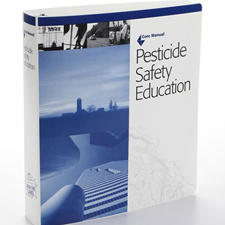
Anyone in the state of Vermont who uses, supervises, recommends, or
sells pesticides and/or trains Worker Protection Standard
handlers/workers may be required to take and pass the CORE exam and all
appropriate category exams to become certified. Certification is
administered by the Vermont Agency of Agriculture, Food & Markets to
ensure that pesticides are used in a proper and legal manner.
- This course is for anyone wishing a Vermont pesticide applicator license: nursery employees, landscapers, farmers, agricultural employers (WPS compliance), garden center employees, pest control operators, government or municipal employees, university employees, etc.
- This course is not intended as a substitute for study of the CORE manual and inserts.
- This course does not provide recertification credit. Please see related Vermont Pesticide Safety Education course offerings for recertification credits.
For more information please contact Sarah Kingsley-Richards at sarah.kingsley@uvm.edu.
Presented by University of Vermont Extension Pesticide Safety Education Program and the Vermont Agency of Agriculture, Food & Markets. [Published 2018]
NOTE: Anyone using the Northeast CORE Manual, 3rd Edition, for other state pesticide applicator certification may also use this review. Vermont-specific laws and regulations do not apply to other state certification; Vermont-specific information may be skipped over in this review. Please check with your state certifying agency for local laws, regulations, and additional required study materials.
The fee for this course is $40. To purchase and enroll in this course, click the following link:
- Teacher: Sarah Kingsley-Richards

With the newly updated tree warden statutes in place and the constant,
emerging challenges with public tree management, the Vermont Urban &
Community Forestry Program has developed the Vermont Tree Warden School.
This online course is designed for tree wardens and decision makers in communities to learn how to better manage their public tree resources. Focus will be on understanding the role and responsibilities of the tree warden, identifying trees a public resource, and connecting with stakeholders in your municipality.
Who can join?
This course is designed for all Vermont Tree Wardens (newly appointed or veterans). Other decision makers such as municipal staff, select board members, conservation commission members and interested tree enthusiasts may also attend. Please note the content will focus solely on the responsibilities of the appointed tree warden. See course objectives below.
Objectives
- Define tree warden responsibility.
- Identify partners and stakeholders in public tree management.
- Identify 3 challenges and 3 opportunities for tree management in your community.
- Explored VT Urban & Community Forestry resources and documents.
- Identify strategies and next steps in your municipality’s tree management.
Questions?
- Teacher: Gwen Kozlowski
